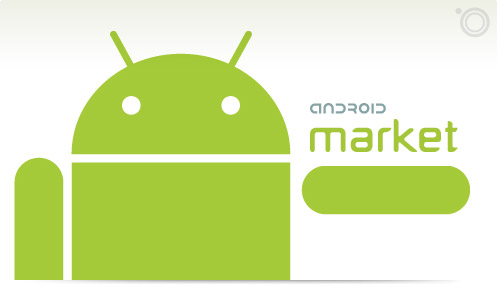pocketgamer消息:手机游戏未来走向十大决定因素
据称,智能手机现在每天销量已超75万部,各种手机操作系统、平台以及应用商店的行情也开始水涨船高。无论你涉足手机游戏的开发、销售还是推广中的哪一个环节,都不得不关注下文所提的十项手机游戏发展要点。
1.应用知名度
让App Store开发商颇为闹心的是,要让自己的应用从47623款其他竞争产品中脱颖而出,难度堪比登天。这可不只是苹果应用商店独有的现象,其他成功应用商店的开发商同样难免这种困扰,因为这些应用平台的搜索功能都不是很理想,应用露脸的机会并不多。
要提高应用知名度,获得有力的价格筹码,品牌意识很重要。如果应用开发商无法让应用与品牌平台沾边,那就只好采用削价促销方式,争夺用户眼球。
但如果每款应用都降到99美分甚至完全免费,那么这种手段最终也是徒劳无功。那么,开发商就得另谋出路,考虑采用发布软文、商业推广、市场营销或其他病毒营销手段赚点吆喝。
如果是iPhone和Android的开发商,笔者建议挂靠最具口碑的平台,OpenFeint和Plus+这两个社交网站就是个不错的选择,如果要打价格战,可以考虑采用FreeAppADay这款价格促销工具。
2.跨平台运营(上)
几乎每天都有23万部iOS手机,20万部Android手机,26万部诺基亚手机和14万部黑莓手机脱销或者被激活,这意味着智能手机应用需求的口子还在不断扩大。
应用发行商往往通过与规模较小、但较成功的iPhone游戏的开发商达成应用移植协议,来填补这一巨大的需求空缺。例如,创造了500万份销量的iOS手机游戏《涂鸦跳跃》(Doodle Jump),就已由Real公司的GameHouse部门开发出Java、Brew和Android运行版本,与此类似的还有由Namco Networks发行、曾销售300万份的《Fight Control》,以及Capcom公司推出的《口袋上帝》(Pocket God)。
这些脱胎换骨的应用为开发商带来的另一巨大好处就是,它们投放到非苹果平台后,价格往往翻了5、6倍。
另外,新款智能手机的不断问世,还为开发商带来了新的资源整合机会,比如说OpenFeint就已联合多家iOS应用开发商大举进驻Android平台,创造更大商机。
3.跨平台运营(下)
除了游戏跨平台移植,手机游戏跨平台运营的另一形式表现在:用户通过任何一款智能手机都能与使用其他智能手机、运营商服务的朋友沟通和互动。这一点对Facebook这类平台的社交游戏发展尤其重要。
但是,不同手机之间的跨平台互动并不像个人电脑之间那样无缝兼容,甚至是苹果Game Center目前也无法访问Facebook上的好友列表,但现在已经有不少公司开始提供跨平台服务技术。比如说社交游戏平台Plus+、OpenFeint和Scoreloop提供给发行商Gameloft的Live、Namco Network的Unite、GameHouse的Fusion等服务。
4.Android平台
Android出道表现不俗,不少行业评论家十分看好谷歌智能手机操作系统。虽然Android平台并不都适用于每个开发商的生意经,但它确实造福了大量原先艰难度日的手机制造商,比如说摩托罗拉和索爱,也为三星和HTC开拓了额外市场。
当然,Android仍然不够完善,其操作系统存储残片、多个手机平台与其操作系统兼容性、应用商店暂无全球通用计费系统等一系列问题,仍然是Andorid需要突破的瓶颈。
但总体而言,Android对手机原始设备制造商和运营商来说,确实是一种差异化的市场选择。
5.游戏销量与数量
游戏销量越大,开发商获利越多,尤其是当游戏标价99美分时,游戏销量更为关键。
游戏出手快、销量大,也是一种良好的用户反馈形式,有助于增加游戏应用抛头露面的机会,而游戏知名度的提高,无疑将再度刺激市场销售。
另外,开发商或发行商推出的游戏数量越多,获益就越多。这方面的典型是美国开发商Backflip Studios,该公司曾推出的iOS应用下载量将近5000万(多数为免费应用),现在通过跨平台推广,其免费新游戏在短短数月时间内都能轻松收获400万下载量。
并不是说只有免费游戏才需要以数量取胜,付费应用也概莫能外。在此仅以Gameloft为例,该公司首轮出击App Store的头18个月中就推出了55款iOS应用,并计划2010年发行60款应用。总而言之,更多游戏数量意味着更大收益。
6.应用价格战
开发商在App Store的应用价格战打不响并不奇怪,要知道最畅销的iOS游戏《愤怒鸟》也不过为发行商Chillingo创收450万美元,开发商Rovio也对此沮丧不已。
较大块头的手机应用发行商目前也只敢指望每年从自己最拿得出手的游戏中创收1000万美元,比如说Java/Brew手机游戏《速度与激情》(The Fast & The Furious)就属于这种情况。而且实现这一目标的前提是,这些付费应用的价格在5美元以上。
换句话说,如果要让每名玩家为免费手机游戏平均每月创收1至2美元,那么每款游戏每年至少要虏获100万活跃用户,才有可能完成这个指标。
7.应用计费解决方案
iTunes运营7年积累了广泛群众基础,苹果又在2008年适时推出了App Store,该应用商店也就轻松绑定了大量的信用卡/借记卡付费用户(目前已达1.5亿人),这确实是App Store的优势所在。
与此类似的还有贝宝支付系统,目前已开通2亿个帐户,为Android等智能手机应用商店创造了强大的交易渠道。
不支持运营商计费系统的应用商店,将难以拓展客源,只能与原有的客户群建立交易关系。正如诺基亚所言,使用运营商计费系统,所获营收可达纯信用卡支付方式的13倍。
8.应用商店
越多应用商店意味着越多的应用下载、销售渠道,但开发商和发行商首先要琢磨的是,究竟该选哪个应用商店,才能使销量最大化,同时又有利于塑造品牌?
当前大部分游戏销售还是由运营商一手包揽,尽管这些运营商缺乏病毒营销策略、灵活的价格调控机制,但仍然可以视为原始形态的应用商店运营方式。
但开发商要注意,最成功的应用商店往往是那些知道迎合大众需求,能够为用户提供最简便的应用搜索、下载和付费等功能的平台。
9.市场营销手段
青涩不成熟的智能手机应用商店往往缺乏连贯性的市场营销手段。但Java和Brew平台游戏,以及掌机游戏的情况却非如此,这些领域的发行商往往从市场终端入手,直接面向用户推广游戏。尽管在过去两年中,这些发行商却是依靠塑造品牌和病毒式推广等手段促销游戏。
当然,这种情况未来一定还会改变,或许发行商还将从手机经济圈中被忽略的市场空间中获利,比如说运营商、大型传媒品牌的下游市场,正在攀升阶段的公司、纯智能手机应用发行商的上游市场。
10.游戏质量
尽管社交平台和手机平台数量激增为手机游戏发展注入了无限活力,但唯一能决定这一行业市场前途的恐怕还是手机游戏质量本身。
现在市场上已有不少质量较高的手机游戏,比如说Gameloft的《现代战争:沙漠风暴》(Modern Combat: Sandstorm)和《N.O.V.A.》,免费在线社交游戏《We Rule》,以及纯粹打发时间的《愤怒鸟》和《涂鸦跳跃》等游戏,优秀手机游戏越多,用户的选择权越大,手机游戏市场的版图才越可能扩张。
笔者认为这一点,才是手机游戏未来走向的最终决定因素。(本文为游戏邦/gamerboom.com编译)
Ten key trends in the mobile games business
So many fortresses and ways to attack
There’s plenty going on in the mobile games business. Over 750,000 smartphones are being sold daily, with various OSes, platforms, and application stores springing up.
Making sense of the situation requires the ability to be able to focus on the woods and the trees.
So what follows is an attempt to highlight some of the key trends that everyone in the business of making, selling and promoting mobile games should be thinking about.
1. App discovery
The biggest issue facing developers on Apple’s App Store is how to stand out from the 47,623 other games. But, in time, this will affect all successful application stores, as fundamentally they are not ideal places to browse content.
The result is the growing important of brands in terms of gaining visibility, and more importantly, enabling premium pricing. Conversely if developers don’t have access to brands, they try to gain visibility through price promotions and sales.
However, there’s no competitive advantage when lots of games are priced at 99c or go free. This is why discovery is moving into other areas, such as press, promotions, marketing and other viral ways of gaining audience.
Key, for iPhone and Android, are social networks such as OpenFeint and Plus+, and price promotions tools such as FreeAppADay.
2. Cross platform (part 1)
With 230,000 iOS, 200,000 Android, 260,000 Nokia and 140,000 Blackberry devices sold or activated daily, there is a huge new audience for smartphone content.
This demand is being fulfilled mainly as publishers do porting deals with the small developers of successful iPhone games. For example five million iOS seller Doodle Jump was bought to Java, Brew and Android by Real’s GameHouse division. Similarly Namco Networks published three million seller Flight Control and Capcom Pocket God.
What’s also significant about these deals, is you can charge up to five or six times more on non-Apple platforms.
The launch of new smartphones provides new aggregation opportunities too, as we’re currently seeing with social network OpenFeint encouraging iOS developers to port to Android to develop its own business strategy.
3. Cross platform (part 2)
Aside for porting games, the other big opportunity in terms of cross platform gaming is the ability to enable people using any smartphone to connect in some way to their friends using any other smartphone and on any other carrier. This is crucial for the rise of social gaming as seen on Facebook.
Clearly the process is never going to be as seamless as on PC. Even Apple’s Game Center is currently limited as it can’t access Facebook to populate its friends list, but there are plenty of people providing the basic cross platform technology.
These range from the social gaming platforms such as Plus+, OpenFeint and Scoreloop to publishers, with examples including Gameloft’s LIVE, Namco Network’s Unite and GameHouse’s Fusion.
4. Android
There are as many opinions concerning Google’s smartphone OS as there are industry commentators, with Nokia’s outgoing head of mobiles Anssi Vanjoki providing the most vivid statement.
Certainly, Android doesn’t fit into everyone’s business strategy but it is providing a massive opportunity for companies who were previously struggling, such as Motorola and Sony Ericsson, as well as additional growth opportunities for the likes of Samsung and HTC.
Of course, there are also many issues with the platform ranging from OS fragmentation, too many devices to support, and a lack of a solid application store with global billing methods.
Yet, in the short term, it’s a differentiation opportunity for OEMs and operators; witness Vodafone’s adoption of the technology in conjunction with its new All You Can Eat games subscription service.
5. Volume(s)
There are many ways in which the volume of game sales is important. Obviously, the more games you sell, the more money you make, which is vital when you’re talking about selling games at 99c.
However, if sold fast enough, the volume of games sold can also become a discovery mechanism – and a virtuous feedback mechanism – in terms of visibility in a chart driving more sales.
The other way volume can be important is in terms of the number of releases a developer or publisher outputs. The best example is US developer Backflip Studios, which with almost 50 million iOS downloads (mainly free apps), can now easy gain four million downloads of its new free games within months thanks to cross promotion.
And this doesn’t just work for free games. Gameloft released 55 iOS games in the first 18 months of the App Store, but plans 60 releases during 2010. On one level, more games means more sales.
6. App pricing
It’s no surprise that competition and use of low price as a discovery method on the Apple App Store has been deflationary. To that extent, the fact that the best selling iOS game Angry Birds has only generated $4.5 million for publisher Chillingo and developer Rovio is disappointing.
Indeed, big mobile publishers now talk about the likelihood of generating $10 million per year from their big smartphone titles; something that mobile game franchises such as The Fast & The Furious managed on Java/Brew.
At present, the only way to do this would seem to be via paid licensed titles priced at $5+.
Alternatively, with the average revenue predicted to be generated from freemium mobile games estimated at $1-2 per player per month, the same figure could be reached from one freemium game with around one million active players per year.
7. Billing
The App Store launched in June 2008 on the back of seven years of iTunes operations, giving Apple as massive advantage in terms of the number of credit and debit cards it has attached to the marketplace (currently 150 million).
Similarly PayPal, with its 200 million accounts, provides a strong opportunity for integration into smartphone application stores, as we’re eventually seeing with the Android Market.
In general however, any app store that doesn’t offer operator billing will be limited in terms of the number of global consumers it can connect with. As Nokia points out, operator billing increases revenues by up to 13 times compared to pure credit card billing.
Hence, billing is a massive opportunity for operators to leverage their customer relationship, as well as enabling them to experiment with more flexible business models such as subscription or rental.
8. Application stores
Are there too many app stores or not enough? Perhaps it’s a more philosophical than practical question, but fundamentally the more app stores there are, the more apps will be downloaded and sold.
The issue for most developers and publishers is which app stores are economical to support in terms of provided sale volumes and brand development?
And let’s not forget that the majority of game sales are still mediated through the operators’ decks, which despite their closed environment, lack of viral promotion or pricing dynamism, can be seen as rudimentary app stores.
The bottomline is the most successful app stores will be ones that fulfill the public’s demand to easily find, download and pay for the sort of entertainment they enjoy.
9. Marketing
At present, the immaturity of smartphone app stores is demonstrated in the lack of coherent marketing, especially from mobile publishers such as EA Mobile and Gameloft. What marketing and advertising does occur is mainly piecemeal and direct from developers.
Significantly, this wasn’t the case in the Java and Brew era, where publishers promoted direct to consumers much as with console games. For the past couple of years however, companies have been relying on the creation and deployment of brands and viral promotion to drive sales.
Clearly at some point this will have to change, or publishers could find their value in the mobile ecosystem being squeezed – down by operators and bigger media brands and up by fast growing development companies and smartphone-only publishers.
10. Great games
Despite the growing number of social platforms and device availability, what’s fundamental to the expanding mobile gaming market is the quality of the games.
From 200 MB console quality titles such as Gameloft’s Modern Combat: Sandstorm or N.O.V.A., to freemium online social games like We Rule, and pure time killers such as Angry Birds and Doodle Jump, there are high quality experiences for all types of gamers to enjoy.
And it’s this, more than any other factor, that will continue to grow the market.(source:pocketgamer)










































